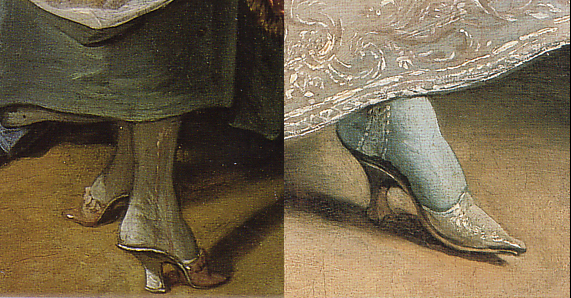In light of my professors emphasizing the need to start developing our writing and conference presentation skills, I thought it would be helpful to create a regular column devoted to writing for fashion studies. And presenting at conferences is a great way of exposing your work to people who could potentially support it.
CHOOSING A TOPIC (Developing a Thesis)
Some consider this to be the most daunting task of scholarly writing. The more you practice thesis construction however, the easier it becomes to formulate them.
First, find something you like, something that has always piqued your interest. It will not only make the process enjoyable and provide motivation for research, but will broaden your knowledge of a subject in a scholarly way.
Then try to narrow down the topic as much as you can. As you do so, try and think about if you have come across those ideas before, either in readings, class presentations, etc. Those thoughts will help you ascertain whether or not the topic has been "done" before.
For example, say you love shoes. "Shoes" is the broad topic - you can come to something more specific by asking yourself some basics: What kind of shoes are your favorite (platform, stiletto, mule, sneaker...)? Who is your favorite shoe designer or manufacturer (Louboutin, Choo, Nike...)? If you could go back in time and wear any kind of shoe, when would that be (Victorian, Renaissance, 60s...)? Is there a region of the world that wears an interesting pair of shoes you don't find where you live (Chinese foot binding shoes, Turkish slippers, Inuit Mukluks...)?
All right. So you're really interested in 18th Century French pantoufles - That's a good start. Now start asking yourself questions about the social contexts of the shoes. Who wore them? What role did they play in society? Who made them? What materials were they made out of? How long did that style of shoe last for? Who started the "trend"? What did people think of them at first, and how were they viewed by those who did not wear them?
It may also help to ask yourself what else was going on in the world during that time. What wars were fought? How was trade and commerce handled? What was going on within the government at the time? How were global relations with other countries? These questions help you set a frame for relating fashion to other areas of study, beyond mere aesthetics.
So now you would like to write about the role of pantoufles during the French Revolutionary War. Perfect. It's specific, and it's contextual.
Your next question is, "Has this been done before?" If the answer is "yes", ask, "How can I expand on this idea, what angle can I view it so that the information appears fresh and innovative?" If the answer is "No", that's an easy one - just get cracking!
Of course, fashion studies goes beyond just socio-historical research. Most areas of social science and the humanities are good places to start (Psychology - "Emotional Responses Regarding Pantoufles by Lower Class Members of French Society"; Theology - "Members of the Clergy Who Wore Pantoufles"). And don't rule out areas like Economics, Marketing, or Natural Science either - you could do a study about the economic impact of pantoufles sales, or look at pantoufles construction derived from fiber analysis.
Professionals from many fields attend conferences, and are looking to collaborate with you or publish interesting work. New ideas increase your chances for such opportunities; for example, there are a million books and articles about the corset, what makes your research different and desirable?
Any research begins with a question, even if it's merely, "Why hasn't this been written about before?" If you've got writer's block, asking questions may lead to the content you're looking for.


What helpful tips! I wish I had of had your blog to read when I was still in school!!
ReplyDelete